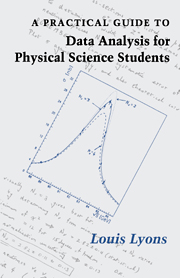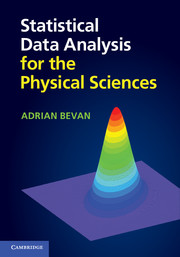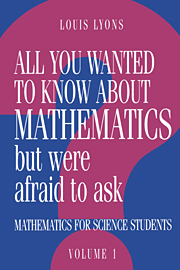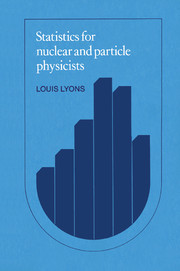A Practical Guide to Data Analysis for Physical Science Students
It is usually straightforward to calculate the result of a practical experiment in the laboratory. Estimating the accuracy of that result is often regarded by students as an obscure and tedious routine, involving much arithmetic. An estimate of the error is, however, an integral part of the presentation of the results of experiments. This textbook is intended for undergraduates who are carrying out laboratory experiments in the physical sciences for the first time. It is a practical guide on how to analyse data and estimate errors. The necessary formulas for performing calculations are given, and the ideas behind them are explained, although this is not a formal text on statistics. Specific examples are worked through step by step in the text. Emphasis is placed on the need to think about whether a calculated error is sensible. At first students should take this book with them to the laboratory, and the format is intended to make this convenient. The book will provide the necessary understanding of what is involved, should inspire confidence in the method of estimating errors, and enable numerical calculations without too much effort. The author's aim is to make practical classes more enjoyable. Students who use this book will be able to complete their calculations quickly and confidently, leaving time to appreciate the basic physical ideas involved in the experiments.
- Short lengh and small size to appeal to students who dislike lengthy treatises
- Applicable in chemistry, physics and engineering
- Author has 20 years teaching experience
Reviews & endorsements
"...a very useful book. It is concise and lucid and designed to be taken into the laboratory and consulted there. The book covers random and systematic errors, variance and Gaussian distributions, and least squares fitting for the determination of parameters. The tone is accessible and user-friendly, but the ground is covered quite quickly, making this a valuable contribution to the education of physics undergraduates." Lewis Ryder, Times Higher Education Supplement
"The author...aims to demystify experimental error estimates and to `enable you to realise when your calculations have yielded ridiculous answers.' He succeeds in this accessible, easy to read, no-nonsense volume which I highly recommend as a companion to laboratory classes for undergraduates....The examples used throughout the book are practical and often very imaginative. These include experiments on electrical circuits, radioactive decay, and the measurement of speed by police radar." Deborah Poirier, Physics in Canada
Product details
November 1991Paperback
9780521424639
112 pages
217 × 138 × 7 mm
0.141kg
24 b/w illus. 2 tables
Available
Table of Contents
- Preface
- Glossary
- 1. Experimental errors
- 1.1. Why estimate errors?
- 1.2. Random and systematic errors
- 1.3. Distributions
- 1.4. Mean and variance
- 1.5. Gaussian distribution
- 1.6. The meaning of s
- 1.7. Combining errors
- 1.8. Systematic errors
- 1.9. An example including random and systematic errors
- 1.10. Combining results of different experiments
- 1.11. Worked examples
- 1.12. Does it feel right?
- 2. Least squares fitting
- 2.1. What are we trying to do
- 2.2. Weighted sum of squares
- 2.3. Determining the parameters
- 2.4. The error on the gradient and the intercept
- 2.5. Other examples
- 2.6. Observed numbers
- 2.7. Parameter testing
- 2.8. Distribution testing
- 2.9. Worked example of a straight line fit
- 2.10. Summary of straight line fitting
- Problems
- Appendices.







